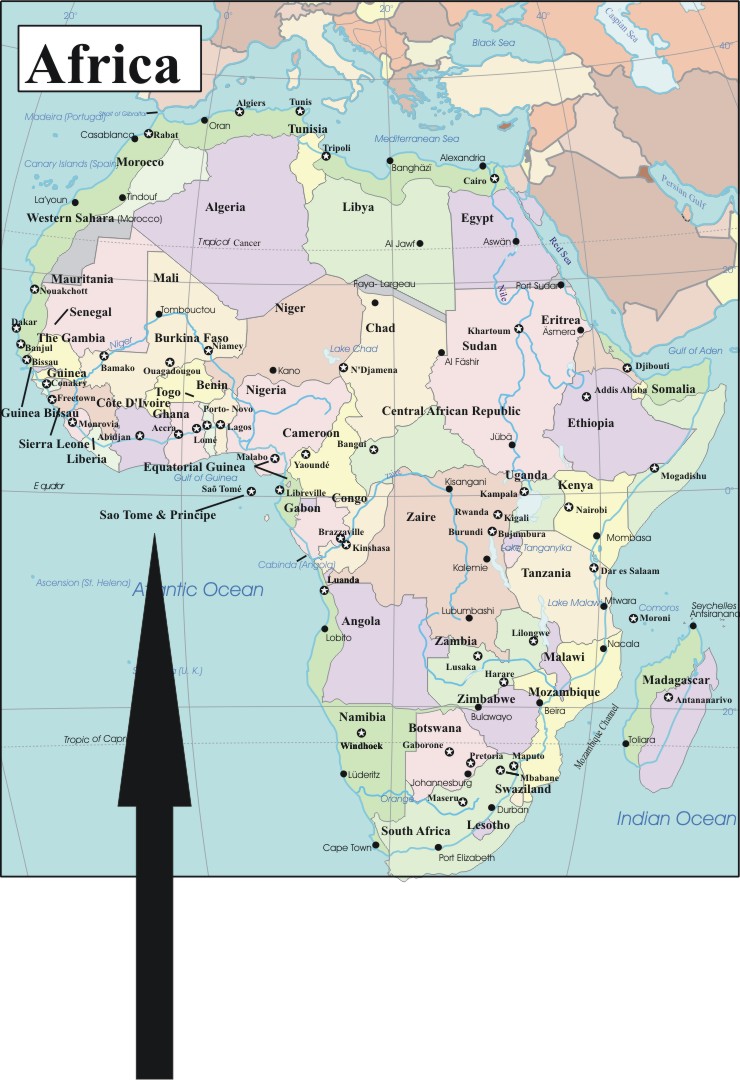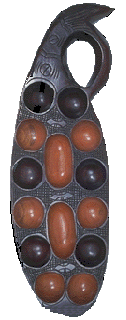
This hand carved and polished mahogany board was purchased by the Museum in 1980. It is undoubtedly a Count and Capture game board.

The seller indicated that he thought the game board was carved somewhere in West Africa, but he was not sure of which country it came from. The wood from which the board is carved is quite solid and relatively heavy compaired with other Count and Capture boards in the collection. The seller thought that the board was carved from a solid piece of mahogany.
The board is in the shape of a curved fish (21.3cm wide x 39cm long x 5cm thick). It has 2 rows of 6 depressions (7cm in diameter) along the length, and 2 larger round depression (11.5cm diameter) along the middle center section. Dark and light stain are used alternatively in the depressions. The board is oval shaped with one end curved out to form the fish's mouth, and the other end to form the tail. Curved incised lines outline the tail. The tail curves upward to form a handle. Small, triangular indentations represent the mouth. Carved lines form details for the shape of the head, gills, and eye. A series of incised lines depict fish scales. The sides of the board slope to the underside which is elaborately incised to depict fish scales.
While 65 small beans were received with the board for use as counters, the African name for the board and playing instructions were not available from the seller.
H.J.R. Murray, A History of Board-Games Other Than Chess, Oxford University Press, 1952, describes many game boards of the Count and Capture type from West Africa (Chapter 7). Many of the games described could be played on this board.
Last update February 5, 2010